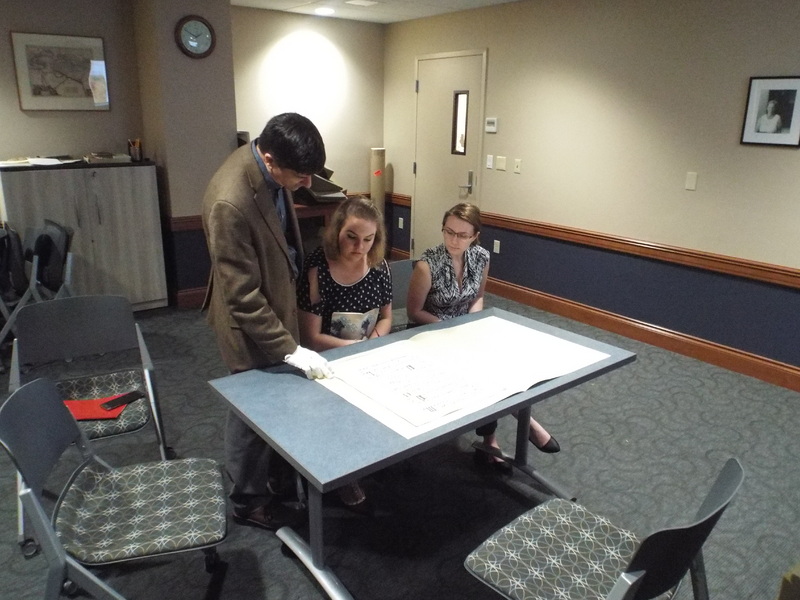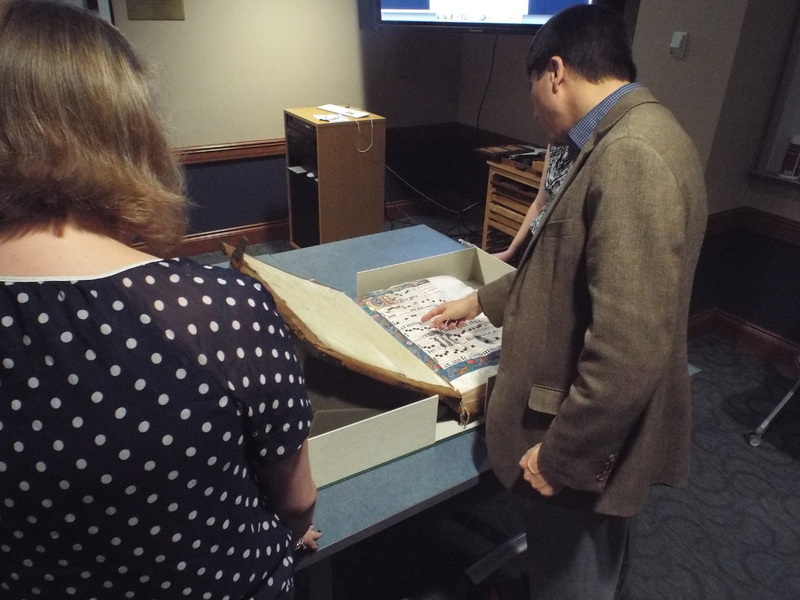Images of a site visit with Ronald Patkus @ Vassar Library.
WCSU Archives: What are the principal resources your staff use to identify materials such as our leaf? Systematically, how would you bring those resources to bear in identifying this leaf? Would the content of the leaf and the lack of any illuminations dictate the level of research conducted
RP: I'd say that when trying to identify a particular manuscript, we need to consult a variety of sources. These may include any surviving provenance information, one's own knowledge and experience, the knowledge and experience of others (scholars, librarians, dealers), and finally scholarly works. The extent to which one consults any of these will vary depending on the circumstances. For example, if one is examining a manuscript in an area that one has much experience, it may not be necessary to consult other sources. On the other hand, sometimes consultation of print or digital sources will be helpful. And if even such research proves difficult, it's helpful to talk with other experts in the field.
The circle of people who really know a lot about medieval mss. is actually fairly small, and many of them are accessible. In looking at manuscripts over the years, I've used each of these sources, again depending on the problem at hand. With regard to your leaf, I think you've followed a path much like this in your investigations, though I'm not sure of the extent to which you've consulted other people and works. One print source that may be helpful for you is Medieval Manuscripts for Mass and Office: A Guide to their Organization and Terminology, by Andrew Hughes.
WCSU Archives: How would you rate (and explain) the chances of finding a matching leaf from the same gradual or antiphonary given vast number of orphan leaves spread around the world?
RP: The chances of finding a matching leaf also will vary, depending on the circumstances. People have been able to track, for example, many of the leaves from manuscripts cut up in the 20th century by Otto Ege. Ege sold to many institutions, and so with some confidence one can trace leaves. But other times, when provenance and other information is difficult to come by, locating matching leaves will be more difficult.
WCSU Archives: What is your best guess regarding the identity of this leaf? From an Antiphonal? Gradual?
RP: Since no provenance information survives about your leaf, we could begin by noting the presence of music. Then your student correctly identified part of the text as from one of the psalms. What about the rest of the text? As it turns out, all of your text appears together on p. 607 ff. in the Graduale Romanum (a Gradual consists of music for the Mass). An online version is here:
http://media.musicasacra.com/pdf/graduale1961.pdf
The script of a manuscript can point us toward its date and even place of production. So with a bit of research we can make some first determinations about the leaf. To confirm, I can recommend some medieval manuscript experts whose opinions can be trusted.



